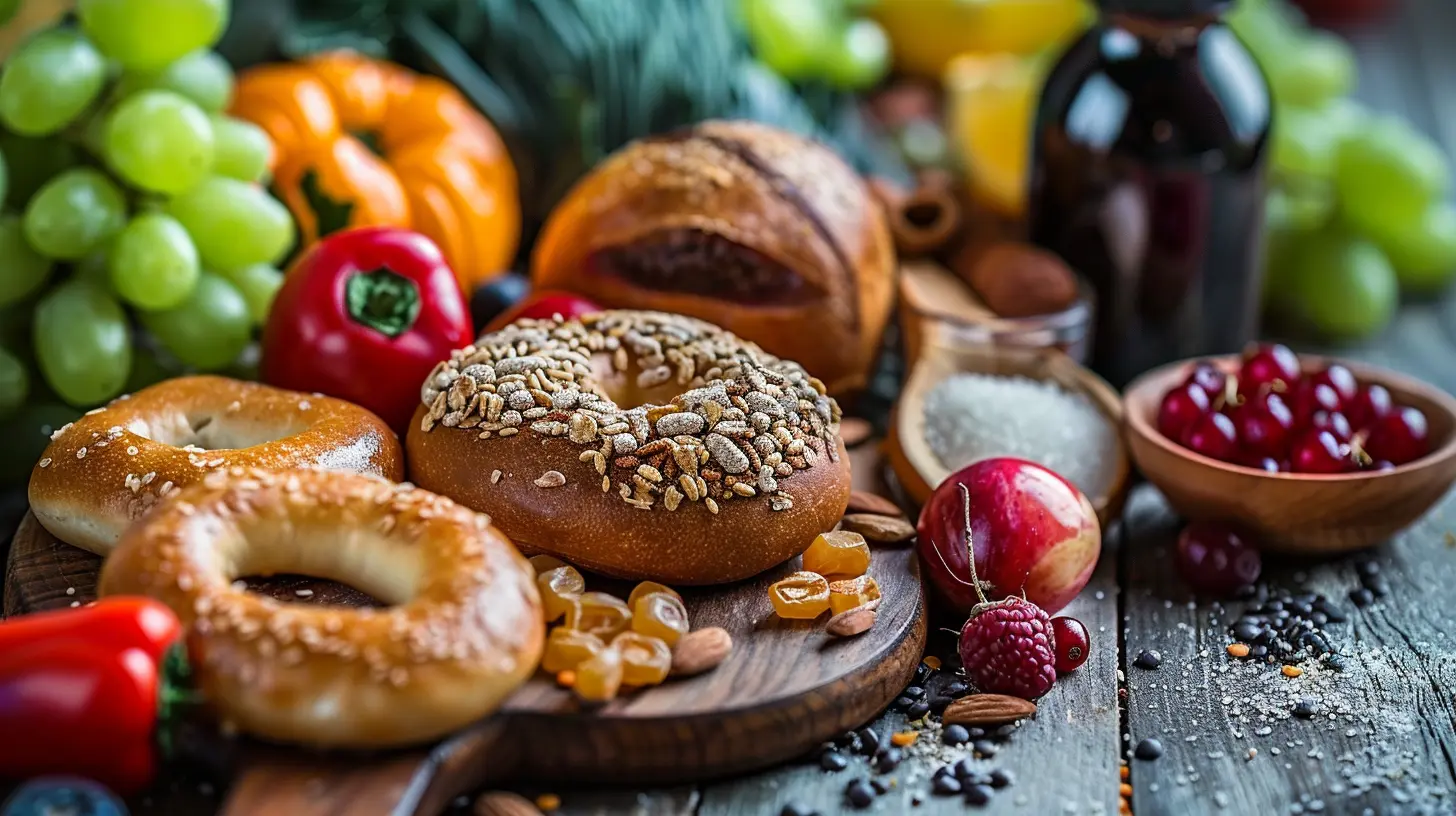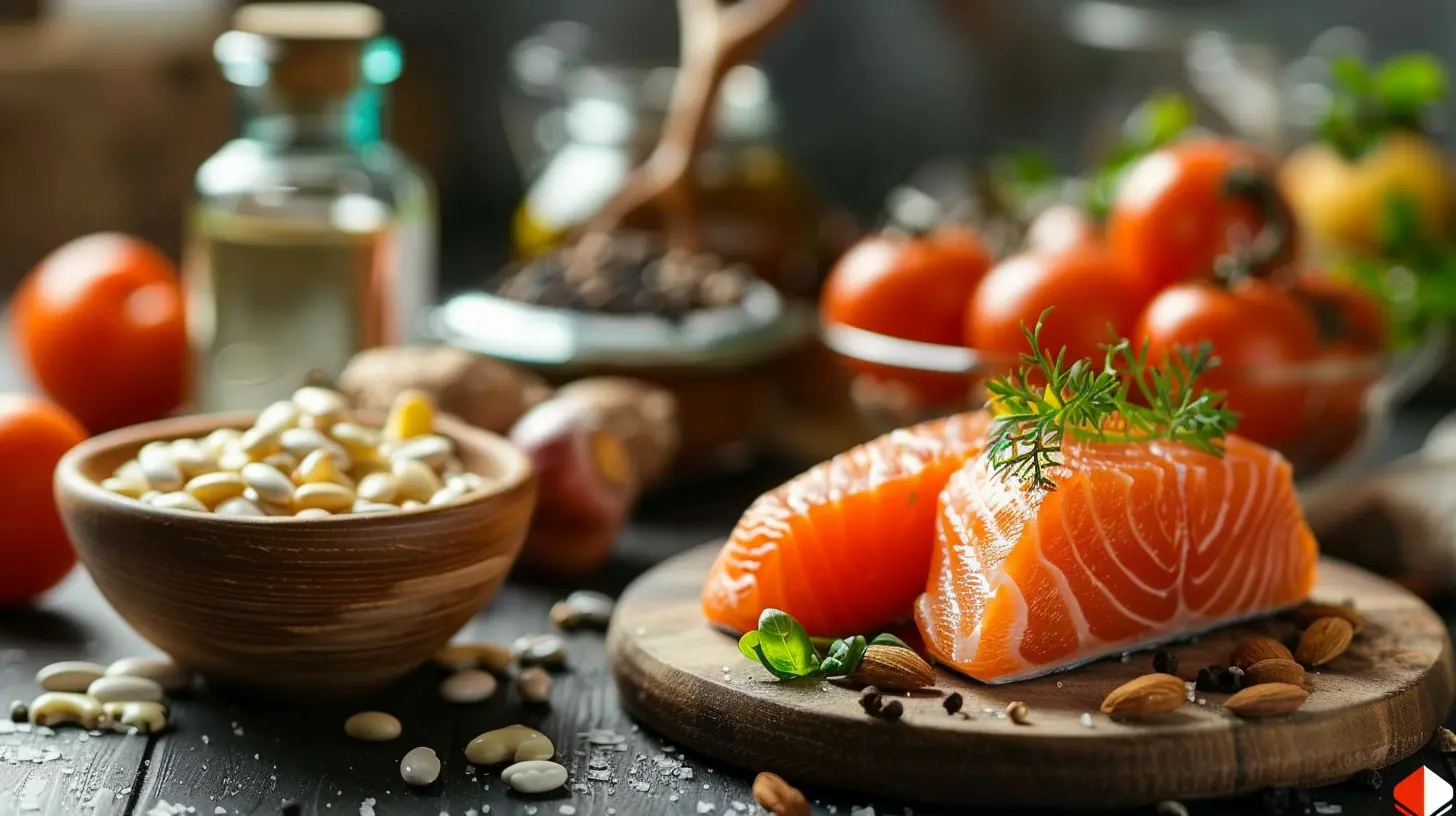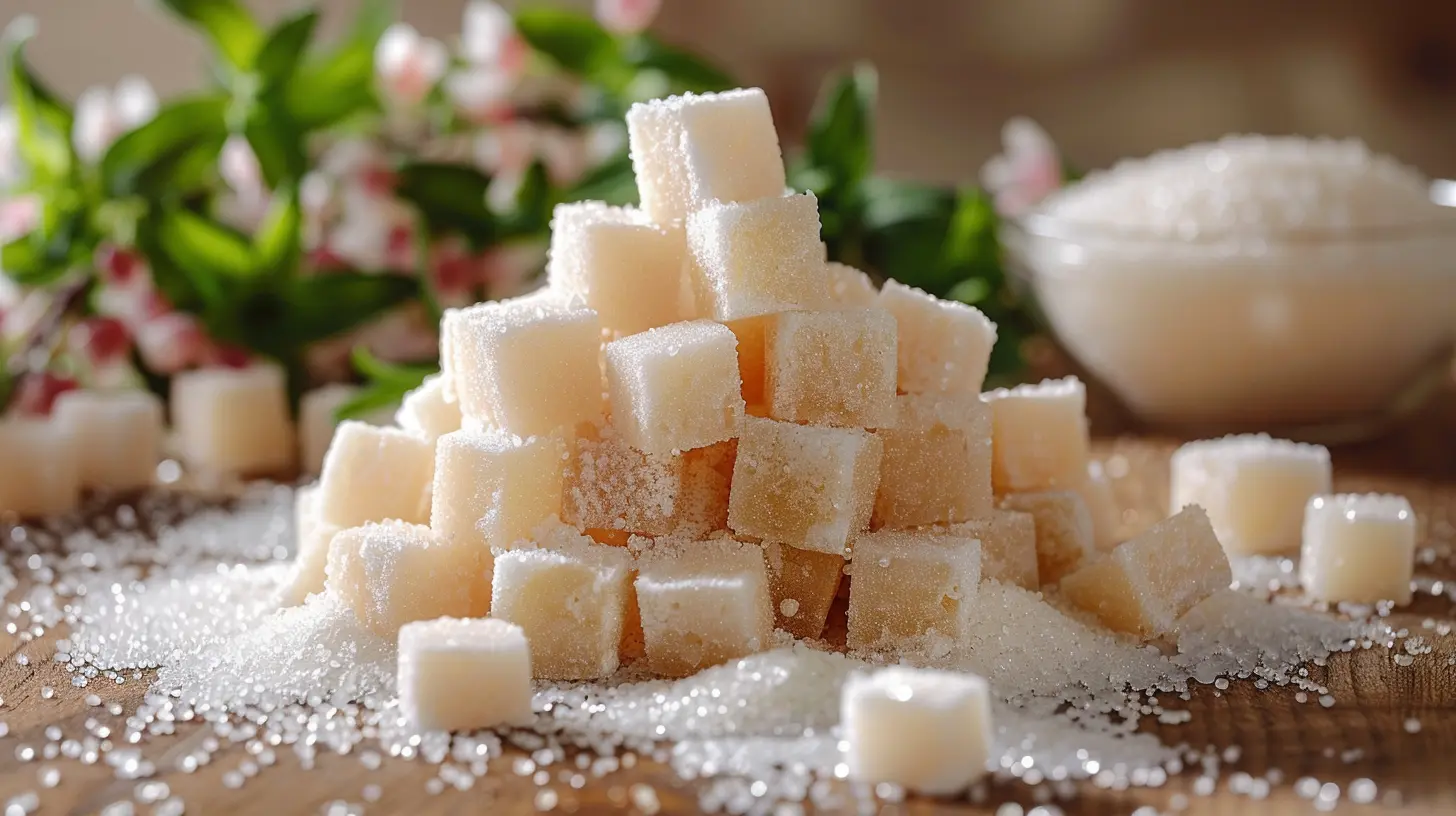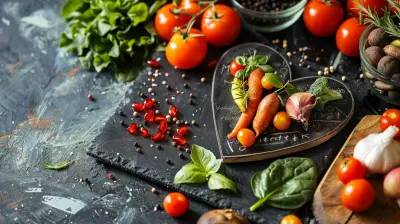How to Read Food Labels for Better Blood Sugar Control
25 December 2024
Managing your blood sugar can sometimes feel like solving a puzzle, right? But here’s the good news—it doesn’t have to be confusing. One of the simplest (yet most powerful) tools for keeping blood sugar in check is the food label. Yes, those often-overlooked boxes of fine print on food packaging hold the key to understanding what you're putting into your body.
Whether you’re living with diabetes, prediabetes, or just trying to stay on top of your health, knowing how to read food labels can make a world of difference. In this guide, we’ll break it all down for you. Think of it like a treasure hunt, where the label contains the buried treasure for better blood sugar control! Ready? Let’s dive in. 
Why Food Labels Are Your Best Friend
Food labels are like cheat sheets that manufacturers provide to help you make informed decisions. They tell you what’s inside the product—everything from calories to carbs, fats, and sugar content. If you're serious about controlling your blood sugar, understanding food labels is non-negotiable.Think of it this way: would you drive a car without a dashboard? Of course not! Food labels are your nutritional dashboard, showing you exactly how "fuel-efficient" the food is for your body. 
The Basics of Food Labels
Before we break it all down, let's do a quick overview of what's on a typical food label. It usually contains:- Serving size
- Calories
- Nutrients (fats, carbohydrates, protein, etc.)
- Daily Value percentages (%DV)
- Ingredients
Now that we’ve warmed up, let’s get into the nitty-gritty details. 
1. Start with the Serving Size
Think of the serving size as the first chapter in your label-reading journey. It tells you the portion that all the other numbers are based on.For example, if the serving size is half a cup and the package contains four servings, eating the entire package means you need to multiply everything on the label by four. That includes calories, carbs, and yes, sugar.
Why is this important for blood sugar? Because portion control is everything. Eating more than the serving size can spike your blood sugar levels quicker than you’d expect. So always check the serving size first; it’s your starting point. 
2. Check the Total Carbohydrates
This is the superstar section if you’re managing blood sugar. Why? Because carbs are the biggest factor in raising your blood sugar levels.Under "Total Carbohydrates," you’ll typically see a breakdown that includes:
- Dietary Fiber
- Sugars (sometimes broken into Added Sugars and Natural Sugars)
Here’s what you need to know:
- Dietary Fiber: This is your friend! Fiber slows down how quickly your body absorbs sugar, which helps prevent blood sugar spikes. Aim for high-fiber foods (at least 3-5 grams per serving).
- Sugars: Watch out here. Manufacturers often add sweeteners to their products, even those labeled "healthy." Check for "added sugars" to see how much sugar was dumped in during manufacturing.
Pro Tip: Stick to foods with less than 5-10 grams of sugar per serving for better blood sugar control.
3. Decode the Ingredient List
The ingredient list is like the hidden diary of a food product. It spills the beans on what’s really inside. Ingredients are listed in descending order by weight, meaning the first few items make up most of the product.Here’s the deal: If sugar (or any of its aliases) is one of the first three ingredients, run the other way. Common names for sugar include:
- High-fructose corn syrup
- Cane sugar
- Honey
- Agave nectar
- Maltose, dextrose, or any -ose
Keeping an eye out for these sneaky sugars can save you from surprise blood sugar spikes.
4. Don’t Ignore the Glycemic Index
While the glycemic index (GI) isn’t typically listed on food labels, it’s worth mentioning here. GI measures how quickly a food can raise your blood sugar. High-GI foods (like white bread or sugary snacks) cause rapid spikes.When choosing packaged foods, opt for items labeled "low GI" or research the product’s GI beforehand. Low-GI foods absorb slower, giving your blood sugar a smoother ride—no rollercoasters!
5. Be Mindful of "Reduced" and "Free" Claims
Ever noticed those catchy labels like "sugar-free," "low-carb," or "reduced-fat"? They sound great, but don’t fall for the marketing traps without digging deeper.- Sugar-free: It might not contain sugar, but it could be packed with sugar alcohols, like sorbitol or maltitol, which can still affect blood sugar (and might even upset your stomach!).
- Low-carb: It may have fewer carbs than the regular version, but it doesn't mean it’s blood-sugar-friendly. Always check the total carbs on the label.
- Reduced-fat: Manufacturers often replace fat with—you guessed it—sugar.
Moral of the story? The label claims are useful, but the nutrition facts and ingredient list are the real deal.
6. Watch for Hidden Sodium
Wait, what does sodium have to do with blood sugar? A lot, actually! High sodium levels can make you thirsty, and if you quench that thirst with sugary beverages, you’re in trouble. Plus, high sodium can increase blood pressure, which is often linked to diabetes.Look for foods with less than 140 mg of sodium per serving. Anything over 400 mg per serving is on the high side.
7. Protein: Your Blood Sugar Ally
Protein is like the brakes on your blood sugar ride—it slows things down and helps you feel full longer. When checking food labels, aim for foods with at least 5-10 grams of protein per serving.Protein also balances out carbs in meals, so pairing high-carb foods with protein can help keep your levels stable. Think of it as a bodyguard for your blood sugar!
8. The Sugar Alcohol and Artificial Sweetener Trap
If you see sugar alcohols (like xylitol or erythritol) or artificial sweeteners (like aspartame) on the label, tread cautiously. While they’re often marketed as "diabetes-friendly," they can still have an impact on blood sugar for some people.Plus, sugar alcohols can cause digestive issues like bloating if consumed in large amounts. Nobody wants to feel like a balloon after snacking on "healthy" treats!
9. Don’t Forget About Fats
Believe it or not, fats play a role in blood sugar control, too. Healthy fats (like those from nuts, seeds, or avocados) can slow down carb absorption. On the flip side, trans fats and excessive saturated fats can lead to inflammation, which isn’t great if you’re managing blood sugar levels.Aim for foods with healthy fats and check for "0g trans fat" on the label.
10. Calories: The Bigger Picture
While calories aren’t directly tied to blood sugar, they do matter for overall health. Consuming more calories than your body needs can lead to weight gain, which makes blood sugar management harder.When reading a label, figure out whether the calories align with your daily goals. If not, it might be time to rethink that snack.
Practical Tips for Better Label Reading
- Take your time: Reading labels might feel overwhelming at first, but it gets easier with practice.- Compare products: Don’t just grab the first option. Look at a few different brands to find the best one for your needs.
- Bring a calculator: If you’re buying multi-serving packages, calculate the total nutrients for the amount you plan to eat.
- Make it a habit: The more you read labels, the more you'll start recognizing patterns and identifying healthier options.
Final Thoughts
Reading food labels might seem tedious, but it’s a game-changer for managing blood sugar. Once you get the hang of it, you’ll feel more in control of your diet and your health. Plus, it’s oddly satisfying to outsmart those sneaky marketing tactics, isn’t it?So the next time you’re at the grocery store, don’t just toss items into your cart. Take a moment to read the labels. Your future self and your blood sugar levels will thank you.
all images in this post were generated using AI tools
Category:
Healthy Blood SugarAuthor:

Laura Hudson
Discussion
rate this article
13 comments
Paris Matthews
Great tips! Understanding food labels is essential for managing blood sugar levels. It empowers healthier choices and promotes better overall health. Thanks for sharing this valuable information!
February 4, 2025 at 3:23 AM

Laura Hudson
Thank you! I’m glad you found the tips helpful. Understanding food labels is indeed crucial for making informed choices for better blood sugar management.
Opal Hurst
Great article! Understanding food labels is key to managing blood sugar effectively. With these tips, it’s easier to make healthier choices that nourish our bodies. Let’s embrace the journey to better health and enjoy the delicious foods that support our well-being! 🌟🥦
January 29, 2025 at 4:19 PM

Laura Hudson
Thank you for your kind words! I'm glad you found the tips helpful. Here's to making informed choices for better health! 🌟
Blake McTavish
Interesting insights! Excited to explore how food labels can improve my blood sugar health!
January 26, 2025 at 4:38 PM

Laura Hudson
Thank you! I'm glad you found the insights helpful. Enjoy your journey to better blood sugar health!
Veronica Harmon
This article presents a fascinating approach to managing blood sugar through food labels! I'm eager to learn practical tips and hidden insights that can empower healthier choices. Excited to explore more!
January 23, 2025 at 5:35 AM

Laura Hudson
Thank you for your enthusiasm! I'm glad you found the article intriguing. Stay tuned for practical tips and insights to help you make healthier choices!
Zinnia Ruiz
Reading food labels feels like deciphering hieroglyphics! Just remember, if it sounds like a science experiment, your blood sugar might not approve!
January 20, 2025 at 5:43 AM

Laura Hudson
Absolutely! Simple ingredients are key. If it sounds complicated, it’s best to steer clear. Your blood sugar will thank you!
Archer Cummings
Decoding food labels is like reading a treasure map—navigate wisely, and you'll find the gems that keep your blood sugar balanced. Knowledge is power, so dig in!
January 13, 2025 at 5:15 AM

Laura Hudson
Absolutely! Understanding food labels is crucial for managing blood sugar. Knowledge empowers you to make informed choices for better health. Happy navigating!
Nixie McKinley
Absolutely love this article! 🌟 Understanding food labels is such a game changer for managing blood sugar. Knowledge is power, and this guide makes it so easy! Keep shining! 🍏💖
January 5, 2025 at 4:11 PM

Laura Hudson
Thank you so much! I'm glad you found it helpful. Knowledge truly is empowering! 🍏💖
Yolanda Gutierrez
Thanks for these helpful tips on managing blood sugar!
January 1, 2025 at 4:20 AM

Laura Hudson
You're welcome! I'm glad you found the tips helpful!
Noemi McDaniel
Ah yes, because deciphering hieroglyphics on food labels is exactly what I need for breakfast. So easy, right?
December 27, 2024 at 5:32 PM

Laura Hudson
I understand it can seem overwhelming, but decoding food labels can empower you to make healthier choices for better blood sugar control!
Knox McVey
Empower yourself with knowledge! Reading food labels is a vital skill for mastering blood sugar control. Each label is a roadmap to healthier choices, guiding you toward vibrant well-being. Take charge of your health journey—every informed decision counts towards a brighter future!
December 27, 2024 at 5:33 AM

Laura Hudson
Thank you for highlighting the importance of reading food labels! Your insights on empowering oneself through knowledge are crucial for effective blood sugar management. Every informed choice truly makes a difference!
Reece Newman
This article offers valuable insights on deciphering food labels for better blood sugar management. Understanding ingredients and serving sizes is crucial for making informed choices and improving overall health.
December 26, 2024 at 4:16 PM

Laura Hudson
Thank you for your feedback! I'm glad you found the insights helpful for managing blood sugar and making informed food choices.
Kael Smith
Thank you for this insightful guide! Understanding food labels can be overwhelming, but your compassionate approach makes it easier for those managing blood sugar to make informed choices.
December 25, 2024 at 4:31 PM

Laura Hudson
Thank you for your kind words! I'm glad to hear the guide was helpful in simplifying food labels. Your health journey matters, and I'm here to support you!
Sandra Powell
Thank you for this helpful guide! Reading food labels can be daunting, but your tips make it so much simpler. A little knowledge goes a long way in managing our health. Appreciate it!
December 25, 2024 at 4:28 AM

Laura Hudson
Thank you so much for your kind words! I'm glad to hear the guide was helpful in simplifying food label reading for you. Here's to better health together!
MORE POSTS

The Role of Soy in a Vegan Diet: Myths and Facts

Finding Harmony with Your Personal Wellness Journey

Boost Your Mood with These Breakfast Foods

Preparing Your Partner for the Pregnancy Journey

The Role of Protein in Sculpting Your Perfect Physique

The Importance of Hydration for Bodybuilders

The Hidden Role of Inflammation in Blood Sugar Imbalance

The Science Behind Veganism and Cardiovascular Health

Combatting Dehydration While You Sleep